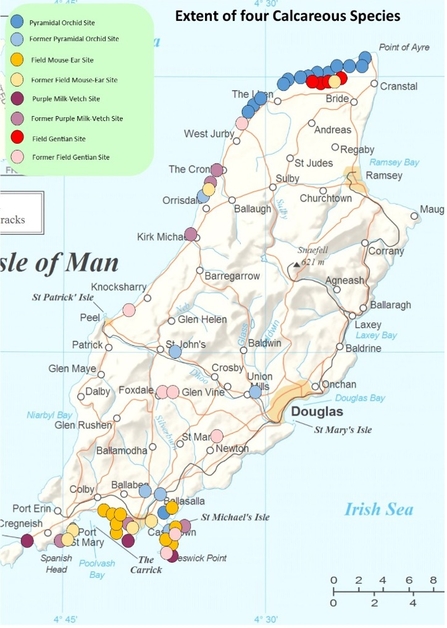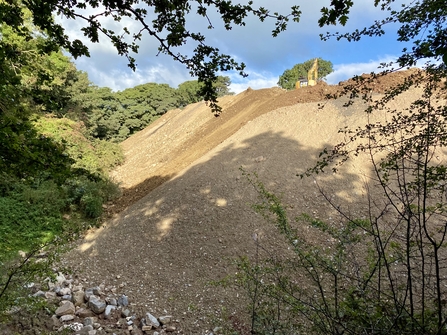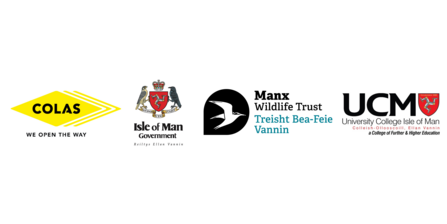Shaking grass is a local Manx name for quaking grass, a beautiful and delicate grass that once grew all around the Island but is now restricted to a tiny meadow near Sandygate. One Sandygate farmer described how when he was young it was so plentiful he would pick handfuls of it as a pretty bouquet for his mum. This project will begin by creating a new site for shaking grass to thrive at one of its old strongholds at Billown Quarries, which will be restored and expanded.
Shaking grass in the Isle of Man, known as quaking grass in the UK!
One decline of many...
Shaking grass is one of many rare and seriously threatened species that like dry, alkaline soils that are lightly grazed. These species have always been restricted, but many sites have been developed, road-verges have become too rank and fertile and other areas have been left to scrub over by trees and bushes, shading out the rare wildflowers. Coastal erosion around Kirk Michael and Orrisdale led to the loss a small but important sand-dune habitat between 1980 and 2000.

While there are many rare species worth saving, the plight of the poorly named ‘Common Agrimony’ is most urgent. It became extinct on the Island in 2008 when the Ronaldsway Airport extension erased its last Manx site. It has been held in cultivation by MWT ever since.
Getting technical...
The correct term for a grassland on soils with a Ph above 7 (alkaline) is a 'Calcareous Grassland'. If this grassland is on thin soils over a limestone bedrock, it is called a 'Limestone Grassland'. The key ingredient that gives soils a high Ph is calcium carbonate, the same material that makes our teeth and bones and the key ingredient of cement. Fresh sand-dunes with lots seashell material will be calcareous, so we often find calcareous grassland species such as pyramidal orchid on dunes at the Ayres. Another common place to find calcareous species is around old building waste, where the lime mortar, plaster and crushed concrete sometimes creates ideal conditions for rare plants.
For context most of the Island has a Ph of 5 to 5.5, but on the hills the acid soils can have Ph values below 4.
Tricia Sayle
Pyramidal orchids at Cronk Y Bing, MWT's nature reserve at the Ayres.
A Safe Site at Billown
Finding a site where these rare plants can thrive has been priority action. A small, neglected old quarry and Area of Special Scientific Interest (ASSI), called Rosehill Quarry ASSI at Billown was selected as the site which could be perfect for restoration and expansion.

The quarry infill will be landscaped and create a limestone grassland habitat!
What can you do?
You can make your own shaking grass butterfly bank! Find out all the instructions here !
If you would like to sponsor this project please get in touch with our Engagement Manager, Graham Makepeace-Warne, who will be able to discuss the options with you. graham@mwt.im.
Example of a butterfly bank, made by Conservation Officer Andree!
Project Partners

